By Herman Brouwer, WUR lead for FoSTr and Wangeci Gitata-Kiriga, FoSTr Country Facilitator Kenya
How can foresight transform the lives of pastoralists, fishers, and farmers in Marsabit County, Kenya? Marsabit County faces formidable challenges, with the escalating impacts of climate change threatening its food systems and livelihoods. Despite decades of significant support from development partners and government initiatives, the tangible results remain limited. This begs the critical question, inspired by David Peter Stroh: Why, despite our collective best efforts, have we struggled to foster lasting, positive change in Marsabit’s food systems?
Foresight could hold the key. By enabling stakeholders to anticipate future challenges, identify sustainable solutions, and adapt to evolving realities, foresight offers a transformative approach to addressing the county’s persistent issues. It’s time to rethink strategies and align efforts to create meaningful, long-term change for Marsabit’s pastoralists, fisherfolk, and farmers.
We brought stakeholders together in December 2024 to explore the above question, and to make a start to imagine different futures for the food system in Marsabit. Naturally, this involved a highly interactive discussion on the current food system and how we got to this situation – using a data walk with up-to-date data and analysis, as well as system maps. This provided the basis to jointly understand the dynamics of how food systems change (or resist change) and imagine how the food system could change even further in the next 10-15 years. The stories that participants came up with, based on their lived experiences in four distinct sub-counties of Marsabit, evolved into four scenarios. We used one of these scenarios (the ‘ideal one’ called Ajako, meaning ‘paradise’ in the Borana language) to create a vision for the future. We then identified the initial pathways and building blocks required to work towards this Ajako scenario.
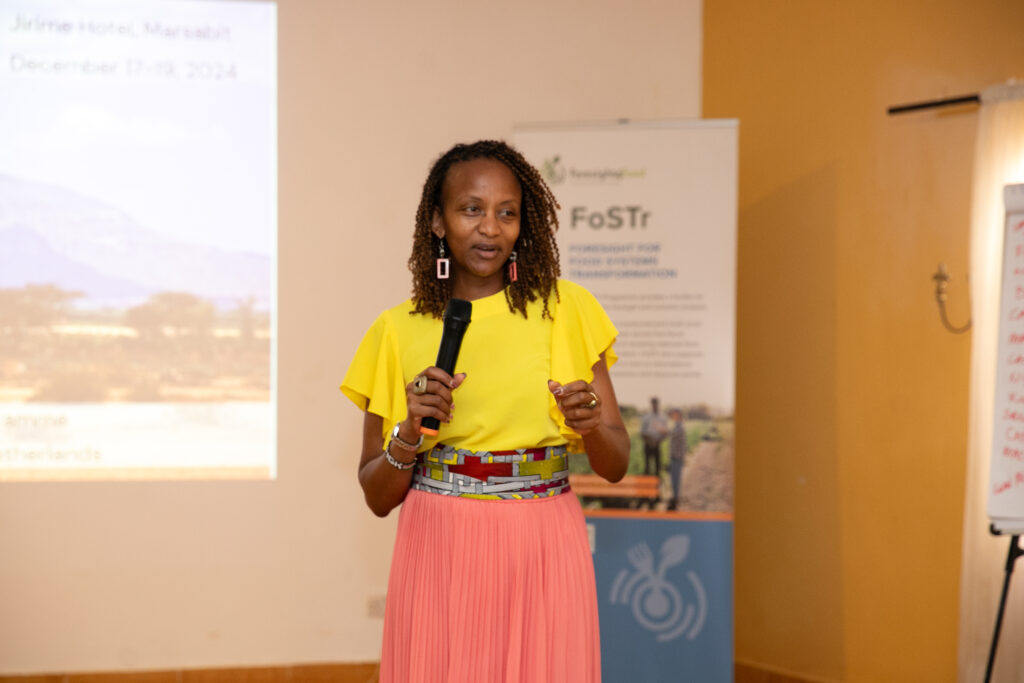
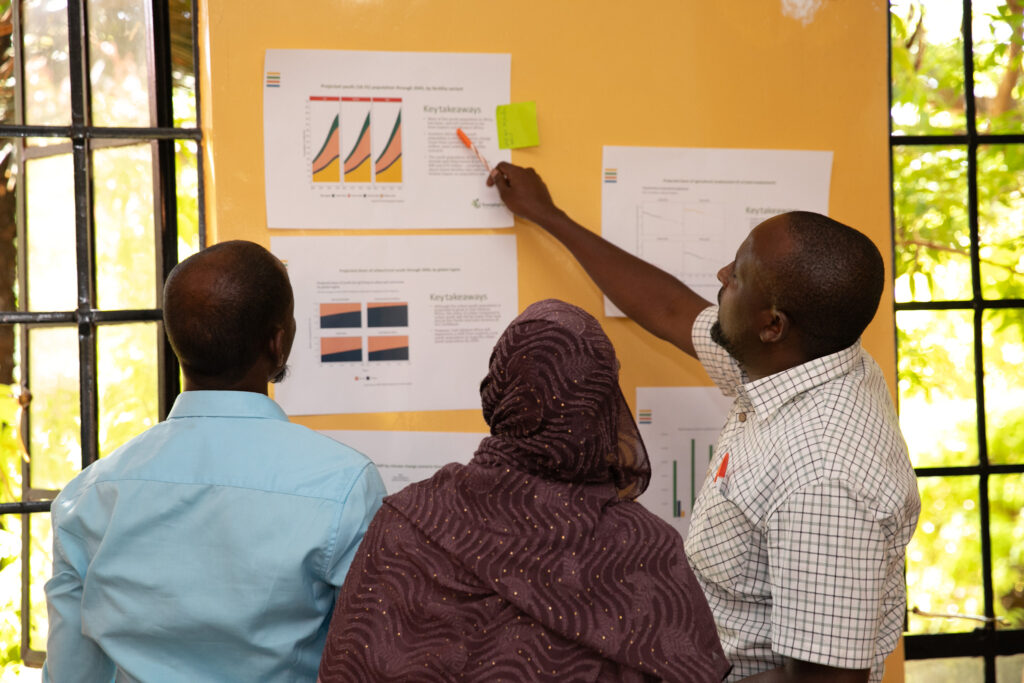
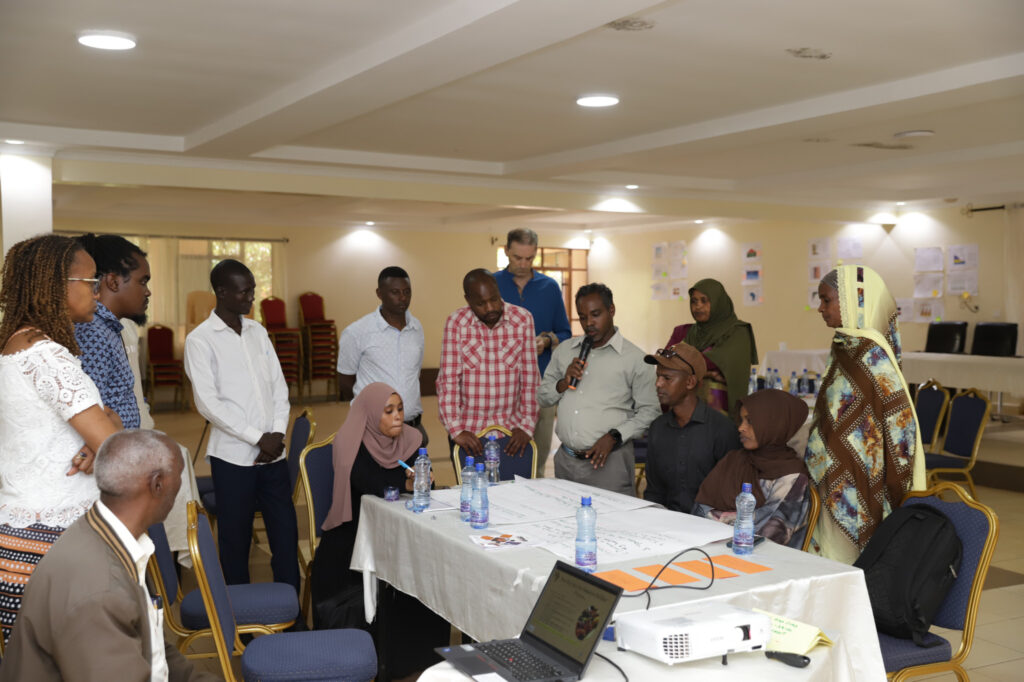
Photo credit: Crispaus Onkoba/SID, used with permission
That’s the summary of where we ended up. However, an essential detail was omitted earlier: How do you ensure the right individuals and institutions are in the room? Achieving this required a carefully planned stakeholder engagement process, which began several weeks before the workshop. The process involved numerous meetings with individual stakeholders across the county to understand who was doing what, who was most invested, what had been successful, and what hadn’t worked in the past. The ultimate goal was to mobilize the most relevant and diverse stakeholders for the 3-day workshop.
We started by engaging the county leadership, relevant government departments, and development partners. But stakeholder mobilization didn’t stop there. We actively sought out voices often overlooked in food systems discussions: faith-based organizations, community groups, and private sector representatives.
Following the workshop, we ensured the initial excitement and momentum were sustained by maintaining contact with key participants. This effort culminated in the formation of a County Development Group, coordinated by the county government. This group brings together all actors actively engaged in food security initiatives, creating a collaborative platform for sustained impact.
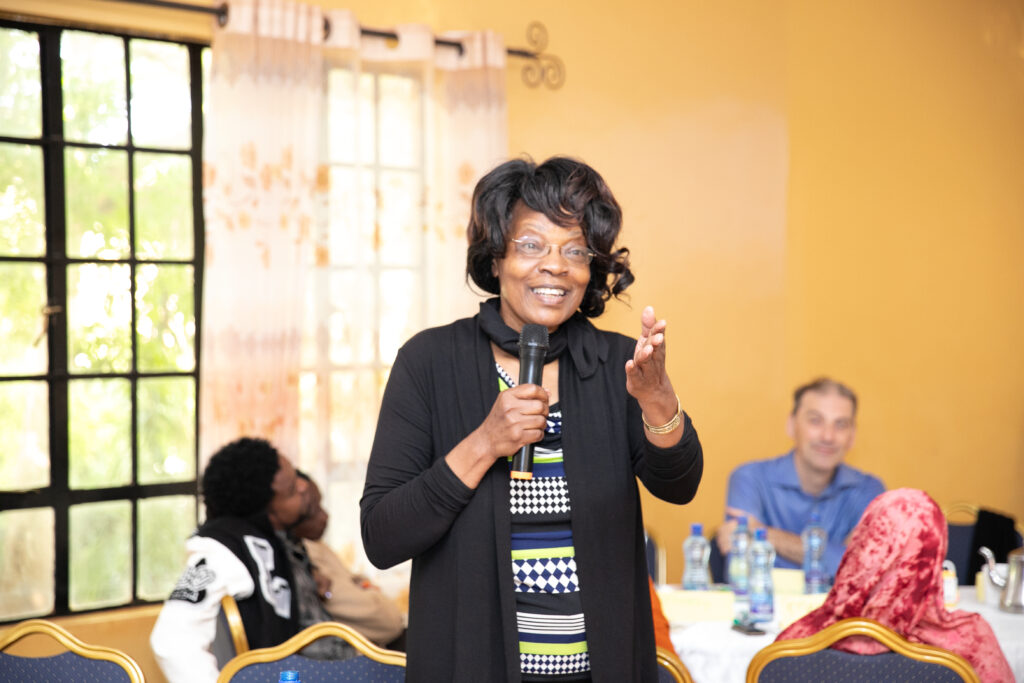
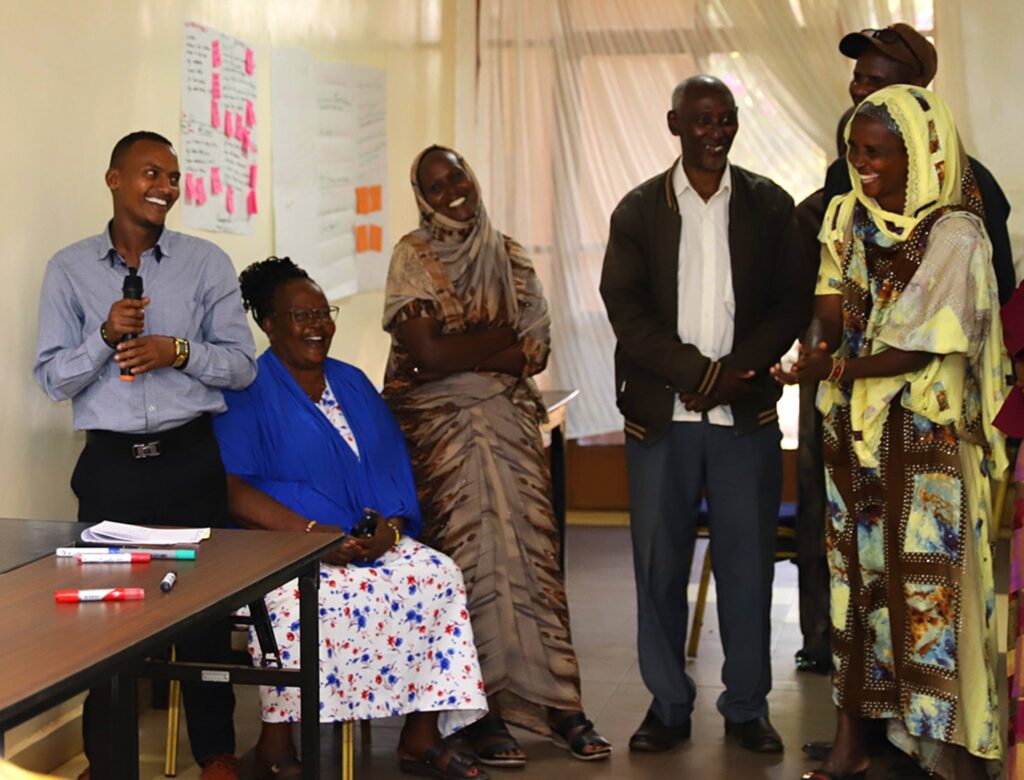
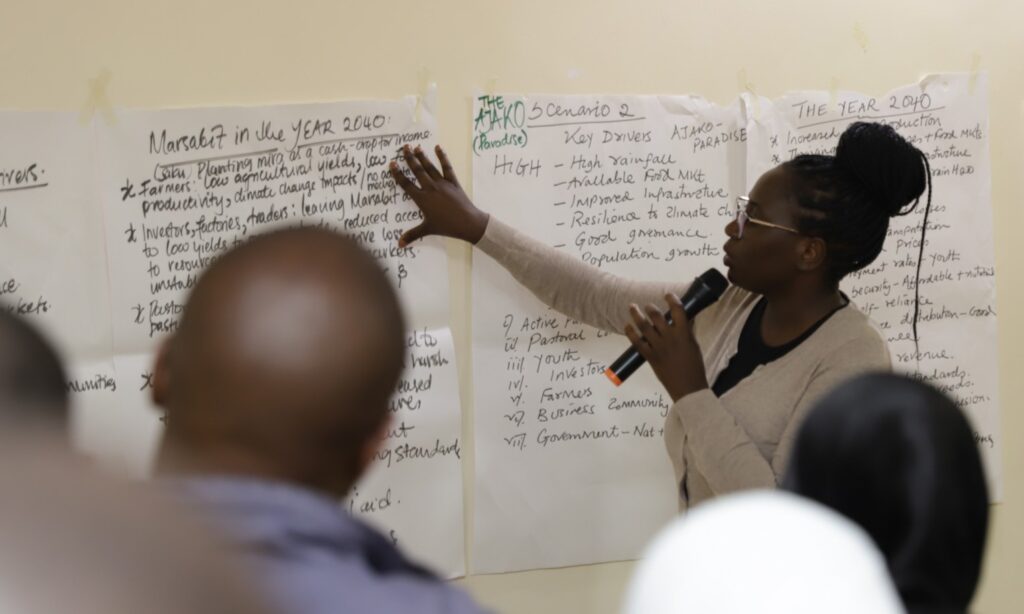
Photo credit: Crispaus Onkoba/SID, used with permission
We argue that the investment in stakeholder engagement has been the most valuable ingredient of the foresight process so far. It has allowed our Kenya foresight team to obtain the right endorsements and buy-in at the right levels. Without getting the engagement process right, all participatory foresight tools, and supportive analytics, are at risk of falling flat.
There is a case to be made to only report on foresight processes after they are concluded, rather than at the start. This blog is an exception, to make the point that how you start matters.
The FoSTr Kenya foresight team, consisting of Results for Africa Initiative (RAI); Society for International Development (SID); International Livestock Research Institute (ILRI); University of Nairobi; Food and Land Use Coalition (FOLU); Wageningen University & Research (WUR); and the University of Oxford, will continue to support the County Development Group in Marsabit to coordinate actions of state and non-state actors towards achieving Ajako by 2040. A similar process is taking place in Nakuru County. Both have active linkages to Kenya’s national food system science-policy interfaces.
By Zoe Barois
Over the past year, the Foresight4Food Foresight for Food System Transformation – FoSTr team and our country partners have begun a foresight process in Jordan, Uganda, Kenya, Bangladesh, and Niger to support national food system transformation. As an initial step, a collective understanding of the food system in different contexts was needed. Hence, the Foresight4Food team in collaboration with our facilitators and research partners in each focus country, created comprehensive food systems reports mapping the dynamics, trends, drivers, and activities within the food system.
Being a lead on food system mapping, I’m sharing my reflections on the process in this blog.
We started with a scoping phase using the Foresight4Food foresight framework, which allows for flexibility and contextual adaptation. This phase involved identifying key stakeholders, understanding their interests, and assessing current and future concerns.
Our next goal was to foster a shared understanding of the food system’s key dynamics, outcomes, drivers, and activities to identify trends and uncertainties. This collective understanding forms the foundation for a participatory process using foresight and scenario analyses to support meaningful food systems change.
The second step, system mapping, was done in collaboration with country facilitators and research teams. We used the Foresight4food framework to identify key food system outcomes, activities, and drivers, considering their interaction with the broader environment. Data were compiled from national and global sources and generated through participatory workshops.
In addition to providing an overview of current status and trends, we conducted a deeper analysis using causal loop diagrams created with research partners during workshops. This approach helped identify trade-offs and synergies, informing actions to improve food system outcomes. We also noted recurring patterns that affect feedback loops, further clarifying the system’s structure.
These reports offer an initial snapshot of the current food system status and are intended to inform a more comprehensive foresight process. As the dynamics, trends, drivers, and activities within the food system continually change, these reports welcome ongoing reflection and discussion.
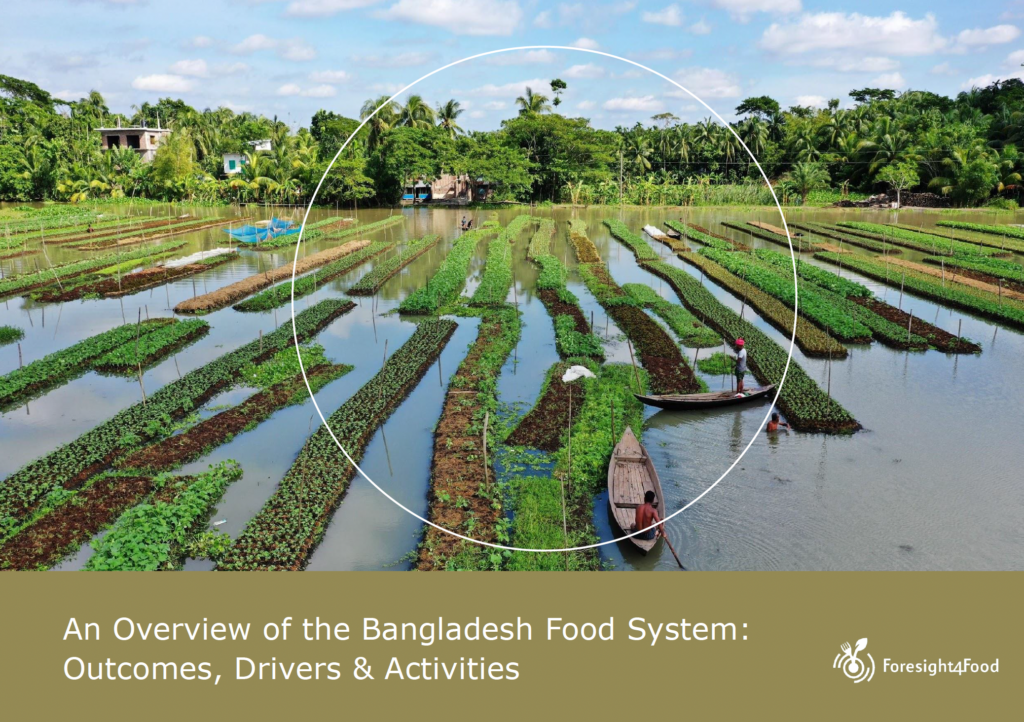
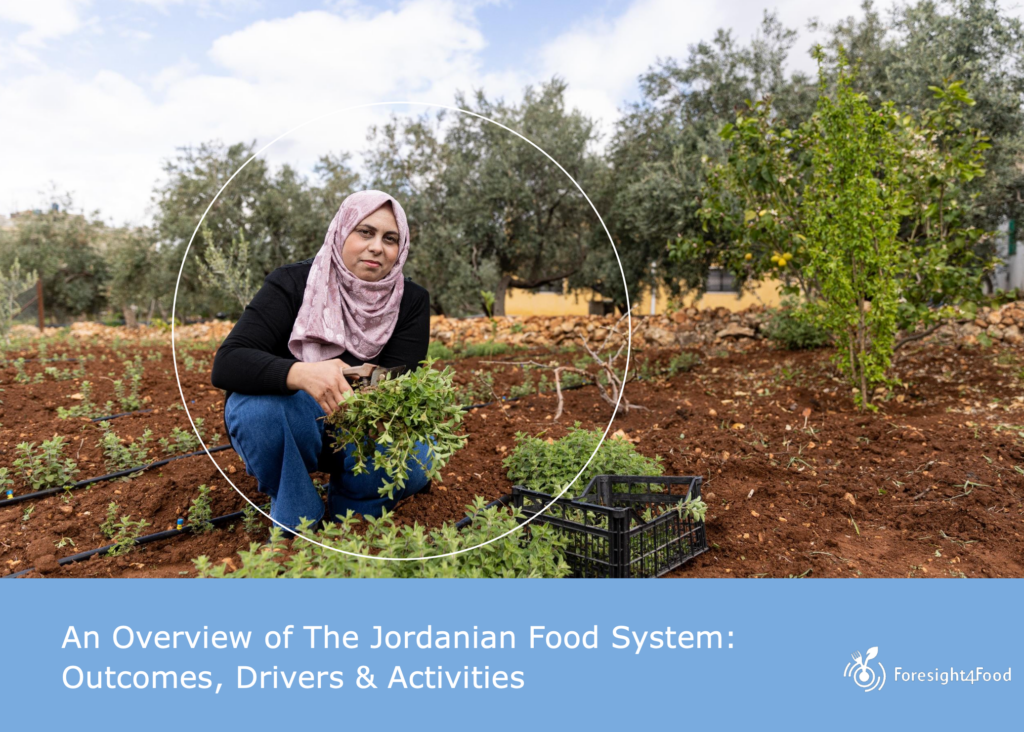
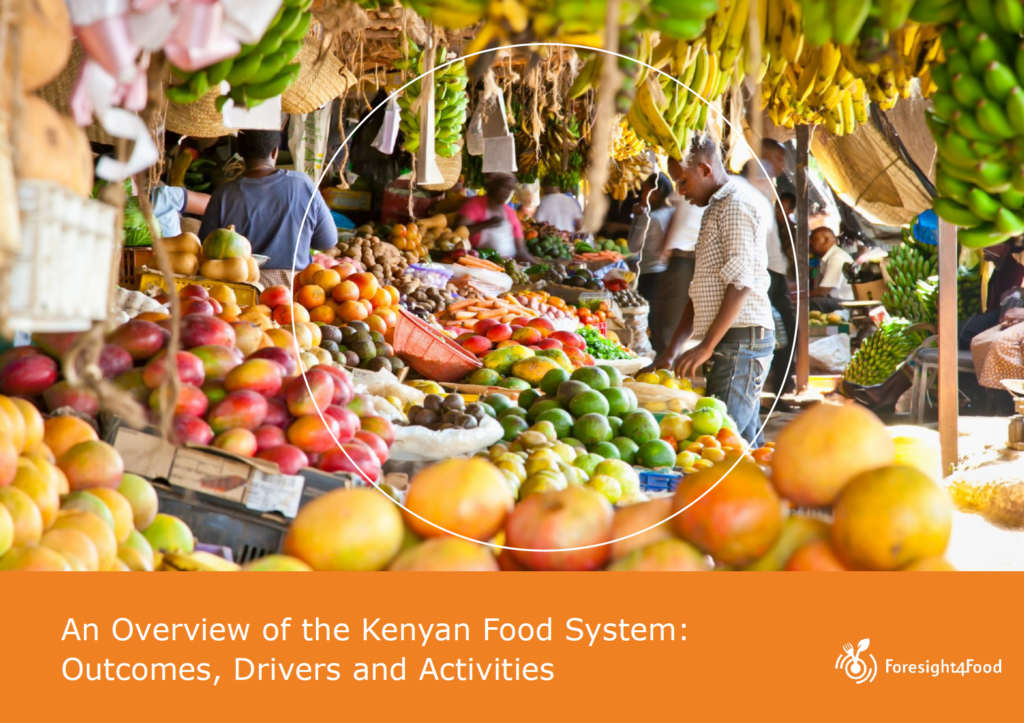
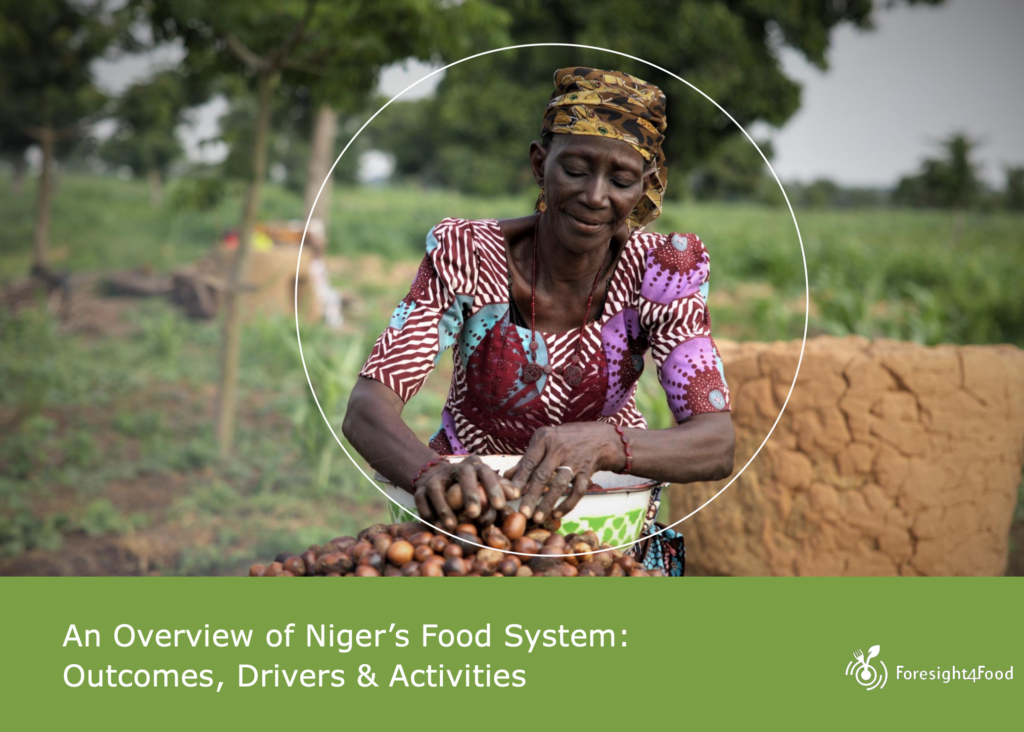
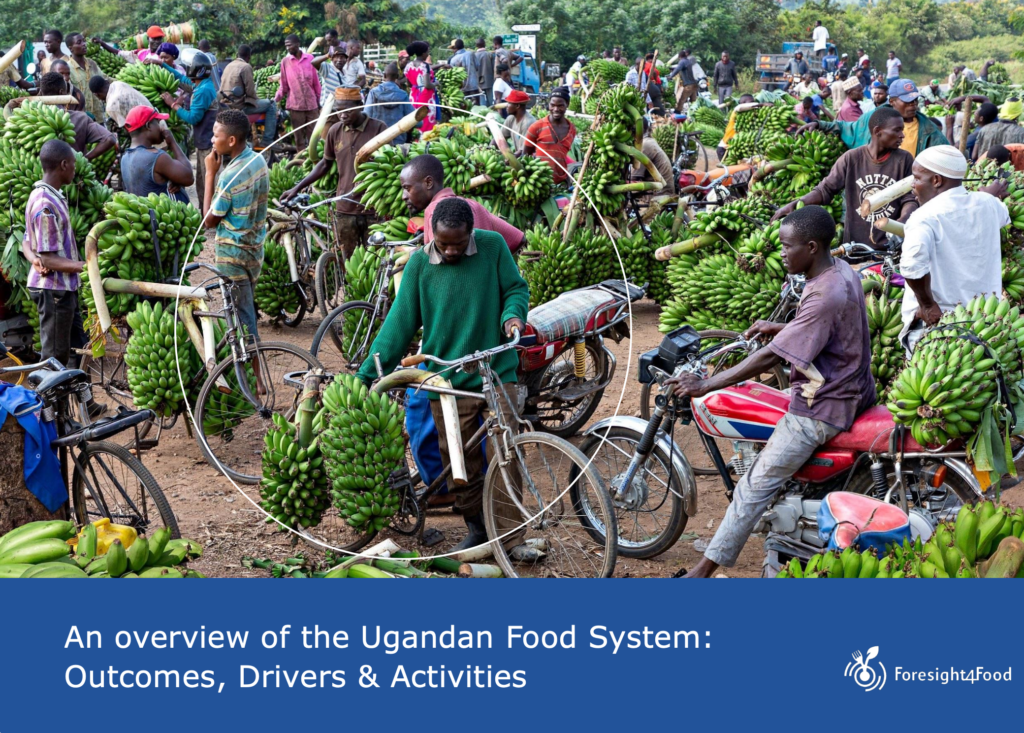
Read and download reports
By Zoë Barois
To support the lasting and valuable development of any multi-stakeholder network, it is important to explore its perceived values and positioning from the perspective of various key and transdisciplinary stakeholders. In line with this concept, five members from the Advanced Masters International Development (AMID) Programme at Radboud University including Emma John, Guusje Dijkstra, Meg van Grinsven, Nadia Rinaldi, and Zoë Barois, collaborated to explore stakeholder perceptions on the perceived values of the Foresight4Food Initiative and the risks it faces when participating in multi-stakeholder networks.
The team conducted seven interviews with foresight experts and practitioners from private, governmental, research, and multilateral organizations, in addition to experts in multi-stakeholder partnerships. Some interesting findings came up in the interviews that led to the development of several guidelines.
Perceived Values of Foresight4Food
The interview participants appreciated that the Foresight4Food Initiative connects stakeholders to (new) players in the field and enables their work to be critically examined by specialists. Being able to harness expertise in the field of foresight and apply this to food system transformation was highlighted to facilitate a deeper understanding of the suitability of foresight tools in diverse contexts.
Additionally, the interviewees highlighted Foresight4Food’s unique value is that it is one of the few initiatives working on food system transformation on a global level, as opposed to most initiatives that focus on national or regional scopes.
Foresight4Food’s deliberate focus on the processes (rather than the product) of forecasting future scenarios was emphasized as a value in itself as it is a strategic tool for food systems transformation.
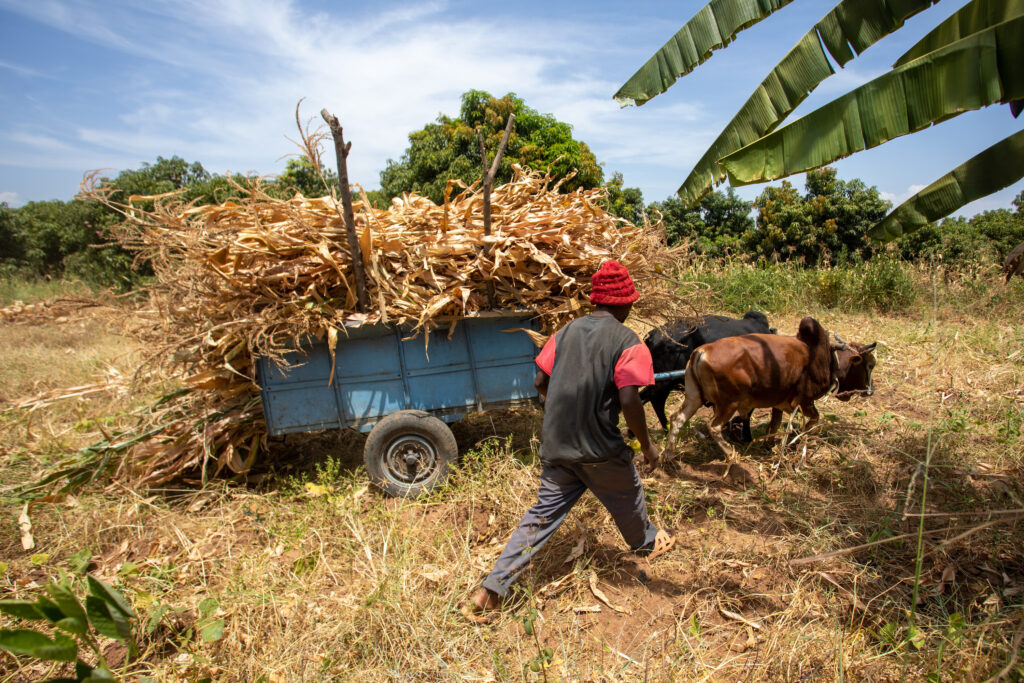
An interviewee highlighted the benefit of Foresight4Food’s open-access resource platform and their ability to provide a neutral meeting space that facilitates cross-learning and a deeper understanding of foresight and food system trends among stakeholders.
“…we see it [Foresight4Food] as a great forum to exchange learning, for example, we just took the exploratory scenario planning process and customized it for use with multi-stakeholder partnerships… this is a tool that already existed that we kind of adapted and would love to share how that works so other people can pick that up…’’ – Foresight Practitioner
Risks Faced by Foresight4Food: Positionality & Durability
During the multi-stakeholder interviews, several thematic risks emerged relating to Foresight4Food’s durability and positionality within the active foresight landscape.
The long-term thinking required to envision the outcomes of Foresight4Food poses challenges in terms of sustainability as this makes it difficult for organizations to invest in the initiative due to investors’ often short-term vision and the need to “show results as quickly as possible” – Foresight Expert — a common challenge faced by many organizations in the development sector.
In relation to Foresight4Food’s positionality, the initiative faces the risk of being duplicated by similar organizations and, consequently, being “squeezed out by the big players if they feel that we are an irritant on the side of what they consider to be their patch” – Foresight Expert
Lastly, Foresight4Food faces the risk of not being “democratised enough and sublevel enough” to truly get involved with the root causes of the food system issues. This stems from the current engagement of true experts in the field and thus emerges as an ‘’elite network’’ initiated by two high-profile universities. This lack of inclusivity is further emphasized by interviewees “not capable of being inclusive we are going to fail giving to those that actually can benefit the most from our work” – Foresight expert
Subsequently, one of the main challenges of F4F is effective outreach and engagement with stakeholders.
Proposed Guidelines
Taking into account Foresight4Food’s vision and the thematic risks which emerged from the multi-stakeholder interviews, several guidelines were generated aiming to support the sustainable and valuable development of Foresight4Food’s multi-stakeholder network.
1. Foresight4Food’s Positionality
Enhancing F4F’s positionality is crucial for the initiative to find its niche. Therefore, the following guidelines are suggested:
- Conducting a needs assessment of the current network members can enable F4F to identify and prioritize their needs.
- The outcomes from the needs assessment can provide an informed direction to perform a visioning exercise. Matchmaking between desired visions and the long-term forecast
- Continuously update the existing mapping of foresight initiatives across the food system. This can be used to perform a competitor analysis to assess the existing gaps in the foresight and food systems field and formulate associated research questions.
- Facilitating smaller partnerships amongst F4Fs members, was highly valued by an interviewee thus F4F could link initiatives conducting complementary activities identified in their foresight initiative mapping, further enhancing their value.
2. Sustainability: Foresight for Foresight4Food
To ensure Foresight4Food’s sustainability and longevity, Foresight4Food must become more attractive to investors:
- ‘Foresight for Foresight4Food’: generating potential future scenarios for F4F to clarify what outcomes and impact F4F envisions in its short- and mid-term futures.
- This can be further enhanced and formulated into concrete goals by a Monitoring, Evaluation & Learning (MEL) expert, who can contextualize F4F’s Theory of Change towards each of the five FoSTr countries, providing concrete outcomes, which are actualized for funders to grasp and support.
- Develop a funding strategy to generate a diversified funding portfolio to ensure financial flow from a variety of sources.
- Attract funding from the private sector and from philanthropy as they are harboring the most financial power within the field.
- Consider transferring core operations and leadership to stakeholders in target operational areas (i.e., the FoSTr countries). This would require creating an inclusive roadmap for phasing-out and phasing-in new or alternative network partners.
3. Inclusivity & representativeness
To make F4F more inclusive, the following recommendations are provided:
- Stakeholder Characteristics and Roles Matrix to map to identify stakeholders who are not yet on board or have a low influence within the network.
- Introduce a ‘second circle’ around the steering committee to include a diversified set of stakeholders in the decision-making processes. This second circle could include farmers, youth representatives, and/ or representatives from the five FoSTr programme focus countries.
- Generate a sense of ownership amongst second circle members through co-creation
To conclude
Foresight4Food Initiative is striving to develop and strengthen its network among foresight practitioners and different stakeholders. However, it gets challenging for any organization to work in a multi-stakeholder environment. Therefore, an exploratory look at the perceived values and positionality becomes imperative.
Foresight4Food, under its FoSTr programme is working in five countries across Africa, Asia, and the Middle East, conducting foresight orientation, stocktaking, capacity building, and exploring ways to transform the country’s food systems. Thus, making it the right time to explore sustainable positioning from a stakeholder’s perspective.